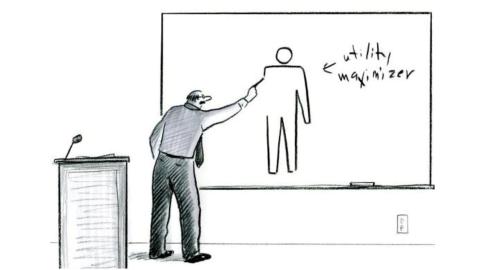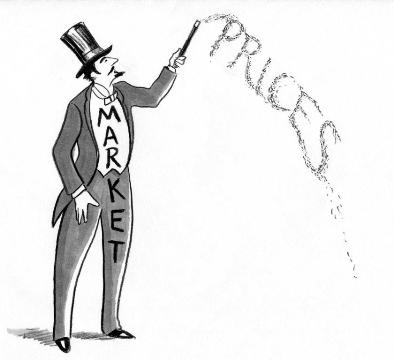Does The Story That Most Shapes Our Times Have Plot Holes?

Are there key plot holes in a tale that shapes our times?
1. Economics illustrates “the pitfalls of a good story,” says science writer Philip Ball.
2. It is built on a simple story that can discount or hide complicating logic.
3. Here’s Adam Smith’s plot summary: “He who intends only his own gain … is … led by an invisible hand … [and] frequently promotes [the interest] of … society.”
4. The key “characters” are self-seeking individuals and competitive markets, where prices automatically coordinate good collective outcomes (benign efficient “spontaneous order” = unintended consequence).
5. But what Smith’s invisible hand “frequently promotes,” it can’t guarantee. The other logical possibility is that self-seeking can cause collective harm, intended or not.
6. Plus the “simple story” mischaracterizes competition and prices.
7. Competition can be efficient, or wasteful — see Markets Dumb As Trees.
8. Prices often aren’t “right.” Both sellers and buyers gain (short-term) by ignoring “externalities,” like pollution costs. That complicates voluntary fixes.
9. Two “invisible hand” types exist. Sometimes local incentives combine to generate good group outcomes. Sometimes they undermine group goals. As Charles Darwin saw, these bad invisible hands create spontaneous disorder, which local incentives can’t cure.
10. Parts relate to wholes in two distinct ways. Sometimes we can predict how wholes behave from the properties of their parts. Other times not; it’s more complicated.
11. The field of “complex systems” studies these trickier beasts. That’s an unfortunate name — jet engines are complex but predictable, and two simple parts can generate unpredictable complexity (Wolfram Rule 30).
12. Markets are the most powerful social forces on earth, they shape how billions of people live. Let’s get their whole story straight. We can’t afford to continue ignoring their complicating logic.
For less one-sided stories, and more on efforts to deploy tools and ideas from complex systems, evolution and business, see Evonomics.
—
Illustration by Julia Suits, The New Yorker cartoonist & author of The Extraordinary Catalog of Peculiar Inventions





